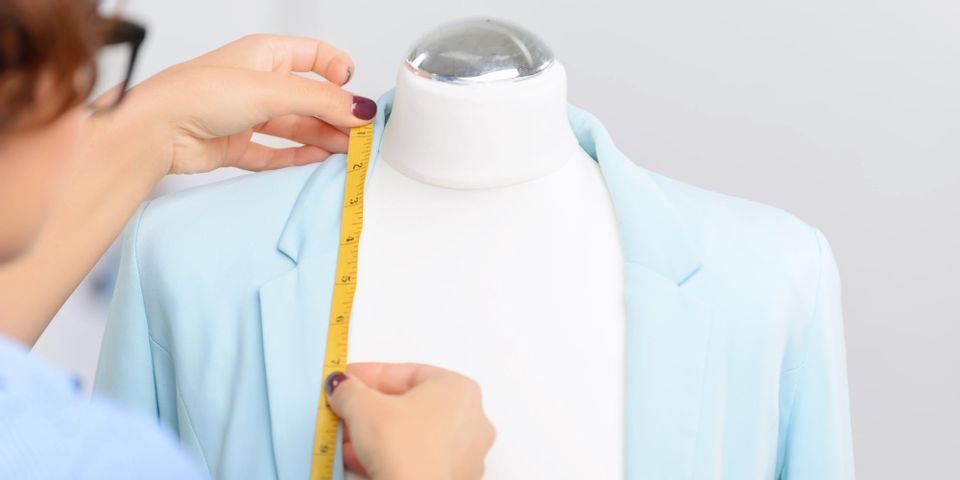
If you’ve ever found yourself looking for your dream garment in stores to no avail, maybe it’s time to take matters into your own hands. Sewing your own clothing may seem like a daunting task, but when you build strong foundations in this skill, you can create one-of-a-kind pieces you’ve always wanted for your wardrobe. Whether you’re a rookie making your first skirt or a pattern pro sewing with spandex, these tips are designed to help you grow as a sewist.
The Essentials for Making Your Own Clothes
The Sewing Machine
 Even if you are a sewing novice, a basic sewing machine is essential to your clothing making process. While hand sewing is a doable feat, it can turn even a simple project into an immense endeavor. When buying a machine, you don’t need one with all the fancy bells and whistles. A simple yet reliable machine will do the job, considering that you will probably only use a couple of straightforward stitches for the majority of your projects until you graduate to more complex sewing fabrics—like spandex.
Even if you are a sewing novice, a basic sewing machine is essential to your clothing making process. While hand sewing is a doable feat, it can turn even a simple project into an immense endeavor. When buying a machine, you don’t need one with all the fancy bells and whistles. A simple yet reliable machine will do the job, considering that you will probably only use a couple of straightforward stitches for the majority of your projects until you graduate to more complex sewing fabrics—like spandex.
For new sewists, many pros will recommend starting with a secondhand machine, particularly if you can find an old metal-bodied one that’s still in good shape. A big drawback of modern domestic sewing machines is that they can be less durable than their vintage or industrial counterparts, and they are less reliable when dealing with heavier fabrics. Industrial ones, on the other hand, are expensive and usually only capable of one stitch. The older metal machines are a compromise between the two, both durable and versatile at an affordable price.
If you’re venturing into sewing without a family member or friend to guide you, your local craft shop will likely have introductory classes on sewing to get you going. When shopping for machines, some stores will allow you to test them out beforehand. Others even host a formal introduction to familiarize yourself with your sewing machine’s functions once you purchase it.
Different Patterns
Sewing patterns are valuable tools when making clothing. They act as maps for your design, with an envelope full of instructions, a pattern template, tips on sizing, recommended fabrics and stitching, and images to help guide you through the project. Read the instructions and the measurement information carefully before starting your project; since you’re taking the time to make the garment yourself, you want to make sure you get the sizing perfectly right for your body. It is also essential that sewing rookies use the fabric recommended for the design to sidestep any issues that might come with an unfamiliar material.
As a beginner, you are more likely to thrive with simpler patterns to start. Most pattern designers will explicitly label the packaging with a difficulty level—look for those that use phrasing like, “easy,” “simple,” or “quick” in their description. They will likely only have a few pieces to sew together. Some top brands for patterns include:
The pattern template can seem like an intimidating beast at first—big flimsy tissue paper donned with sporadic black lines for the different sizing options. With a sharp eye and a highlighter, though, you can carefully trace the lines you need for your project to make it easier to cut out later.
Different Materials
One of the biggest perks of making your own clothing—besides the custom tailoring—is the ability to choose the materials that make up the garment. While it’s usually best to stick with the type of material the pattern suggests, the print of the fabric is entirely up to you.
There are a wide variety of fabric types to choose from, which divide into categories based on their source:
- Animal textiles include fabrics made by hair, fur, skin, or silk. These fibers create wool (made from animal hair, mainly goat or sheep) and silk (made from the fibers of silkworm cocoons). Wool is further classified by the type of hair used, such as cashmere for the soft material made from Indian cashmere goat hair, and angora, which comes from an angora rabbit.
- Plant textiles come in a variety of forms—like cotton, flax (which makes linen), and jute to name a few—and are used on their own or in fiber blends, often with other plant textile fibers.
- Synthetic textiles are made of manufactured fibers and primarily used for clothing. Fabrics like polyester, nylon, and spandex were designed to either imitate similar natural fibers or offer a more durable alternative. Spandex, for example, came to be to combat a rubber shortage during World War II.
Visiting the local thrift store is an excellent way to find unique fabrics for your next project. You can recycle an old tablecloth, curtains, duvet cover, or otherwise by transforming it into something entirely new. Scan the racks for fun details, like ornate buttons and statement zippers as well; these items can add a unique touch to your design.
Tools of the Trade
 A sewing machine isn’t the only tool you need for your clothes-making projects. The following products are what will bring your garment to life:
A sewing machine isn’t the only tool you need for your clothes-making projects. The following products are what will bring your garment to life:
- Thread
- Tape measure
- Tailor’s chalk
- Dressmaking pins
- Hand-sewing needles
- Dressmaking shears
- Paper scissors
- Iron
- Seam ripper
- Pins
Note that there are two types of scissors on this list, and make sure to use both for their intended purposes. Dressmaking shears should only cut fabric. Otherwise, their blades will dull cutting other materials like paper. Reserving them solely for this task will guarantee that you maintain sharp lines while cutting—especially with more pliable fabrics like spandex. Paper scissors can help trim the patterns as well as snip threads and other smaller duties. A seam ripper is another cutting tool that can streamline your work if you make a mistake. It can undo incorrect stitching in one pull, eliminating the hassle of trimming them one-by-one.
While pins can be useful aids while sewing fabrics together, use them sparingly and strategically, so you don’t end up with holes in your material. Some fibers, like spandex, can’t handle getting pierced by sharp needles, which is why you should baste them instead or pin the fabric on seam allowances to avoid holes in the exposed final product. Also keep in mind which needle you’re using on the sewing machine for these types of fabrics, as well, because you will need to sew them with a ballpoint tip to avoid damaging them.
A Tip for Success
As a sewing rookie, don’t rush through a project in an afternoon. Practicing patience will result in a better-made garment and a more accomplished sewist in the long run. Thoroughly read the pattern’s instructions so you can anticipate what you need to do next. Press out your materials to assure cleaner cuts of fabric, material permitting—synthetics like spandex will melt under an iron. Meticulously cut out all of your project; if you have the time, practice the pattern on cheap fabric to work out any mistakes before you work with your higher quality material. If a seam isn’t quite right, rip it out and start again.
Investing the time to get this project right will not only result in a more beautifully crafted garment, but it will also help you to learn from your mistakes quicker, so your next project will run smoother. As you progress, you can move on to more complicated techniques, like buttonholes and darts. When you get to this point, a book on sewing will be an invaluable reference to navigate these new skills.
Ready to make your own clothes? Part of the fun is picking out a unique fabric for your design. If your pattern calls for spandex, the wide selection of material at Spandex House, Inc. is where you need to start your search. As Manhattan’s premier spandex wholesale supplier, their staff will help you find the right choice for your project. For more information and to place an order, call (212) 354-6711 or visit them online.
About the Business
Have a question? Ask the experts!
Send your question

